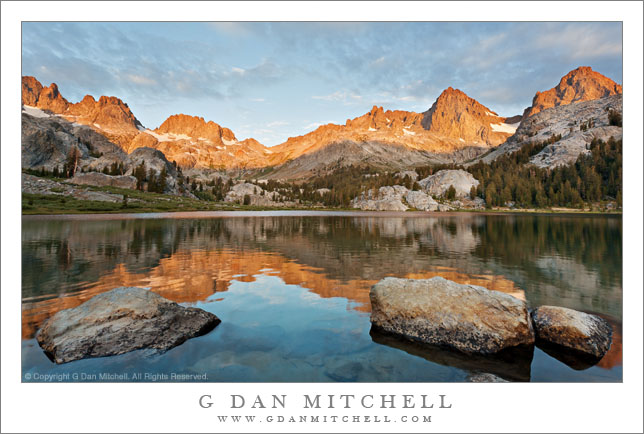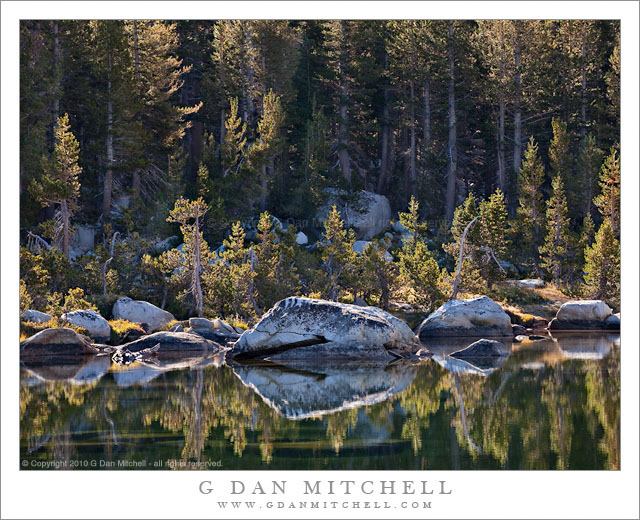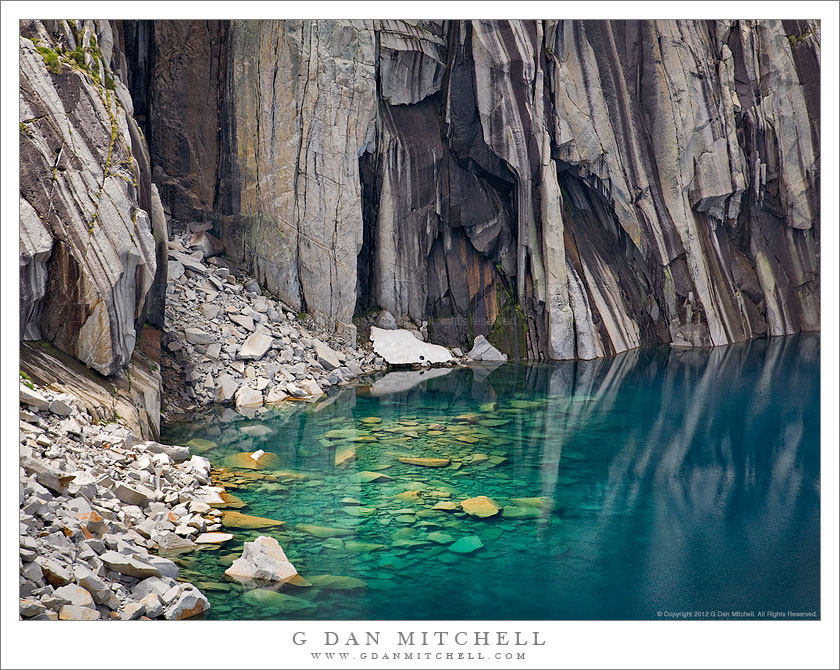Sunrise, Ediza Lake, Minarets, and Mounts Ritter and Banner. Sierra Nevada, California. July 25, 2007. © Copyright 2007 G Dan Mitchell – all rights reserved.
First sunrise light on the Minarets, Mount Ritter, and Banner Peak above Ediza Lake, Sierra Nevada, California.
I made this photograph during a long and leisurely pack trip into the Minarets area of the Sierra Nevada near Mammoth Lakes. It was leisurely because I accompanied my brother and his family – and the fact that some kids were on the trip contributed to the slower hiking pace… as did the fact that both he and I wanted to make photographs.
This is a popular and accessible area of the Sierra, and also one that is a bit unusual. Typically the highest peaks of the range are found on the actual crest, but here the Sierra crest is further to the east and rather low, being right about where the Mammoth Ski Area is located. Across an intervening valley – a valley that holds Devils Postpile National Monument – loom the high and jagged peaks of the Minarets, a series of impressive spires, and the summits of Mount Ritter and Banner Peak. While in most of the Sierra the areas to the east of the highest peaks descend rapidly to the high desert, here the areas below these peaks remain very high and provide a different view of the eastern faces of the peaks.
The photograph was made very early in the morning along the shoreline of Ediza Lake on a day when clouds were already starting to build even at this early hour. Yes, there was rain later on!
G Dan Mitchell Photography
About | Flickr | Twitter | Facebook | Google+ | 500px.com | LinkedIn | Email
Text, photographs, and other media are © Copyright G Dan Mitchell (or others when indicated) and are not in the public domain and may not be used on websites, blogs, or in other media without advance permission from G Dan Mitchell.
(Basic EXIF data may be available by “mousing over” large images in posts. Leave a comment if you want to know more.)




